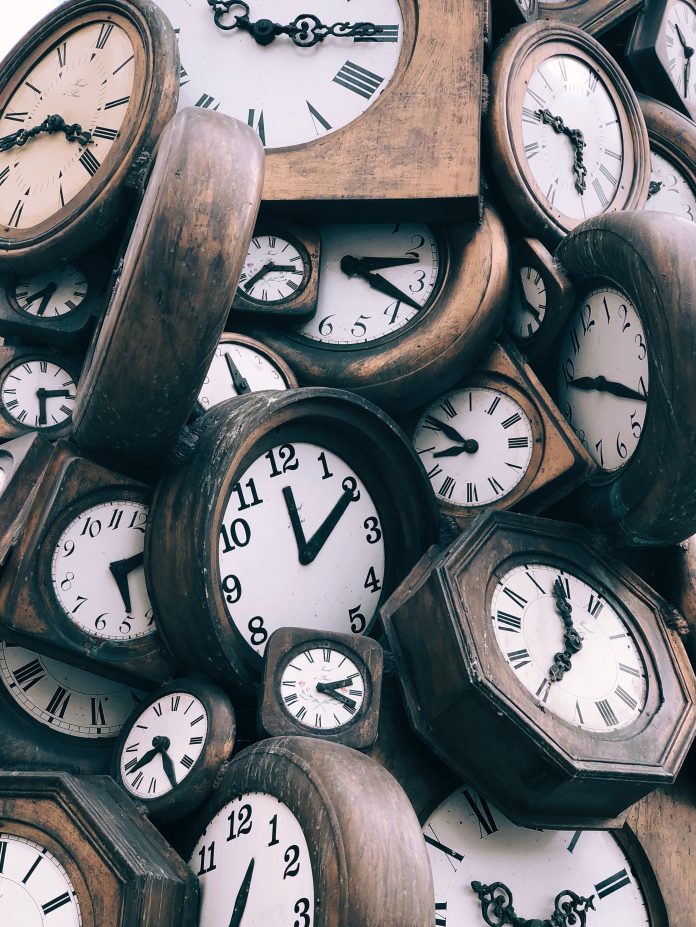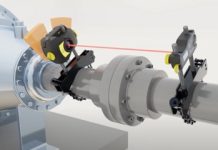Welcome to our blog post where we dive into the fascinating world of real-time clocks and their undeniable affection for 32.768 khz crystals! Have you ever wondered why these tiny timekeeping marvels seem inseparable from this specific frequency? What is it about 32.768 kHz that makes it the go-to choice for ensuring precise timing in various electronic devices?
Join us as we unravel the mysteries behind this seemingly peculiar preference, shedding light on the intriguing reasons that make 32.768 khz crystals a timeless companion of real-time clocks. Get ready to be captivated by an exploration that will leave you with a newfound appreciation for these tickers of accuracy!
The Importance of Accurate Timekeeping
Precision in timekeeping is indispensable across diverse facets of our daily routines, orchestrating schedules and upholding accuracy in scientific endeavors. Without this precision, the potential for chaos in activities reliant on synchronized timing would be insurmountable. In the technological realm, the importance of accurate timekeeping escalates.
Real-time clocks (RTCs) find applications in an array of devices, including computers, smartwatches, and IoT devices. These clocks not only present the current time but also timestamp events and synchronize with other devices over networks. Consider the scenario of an alarm clock that fails to maintain accurate time.
The repercussions could range from oversleeping to missing important appointments, emphasizing the reliance on precise timing. In financial transactions, inaccuracies due to timing discrepancies could lead to errors with substantial consequences. In sectors like telecommunications and transportation, precision in timing is paramount for the synchronization of systems and networks, facilitating seamless communication and efficient operations.
Furthermore, in scientific research and data analysis, accurate timekeeping is of utmost importance. Fields such as astronomy or physics experiments, dealing with minute intervals or celestial movements, necessitate highly precise clocks for dependable results. Accurate timekeeping forms the bedrock for maintaining order and efficiency across an array of domains—spanning personal daily activities to intricate technological systems—making it an irreplaceable facet of modern life.
History of 32.768 kHz Crystals in Clocks
The journey of 32.768 khz crystals in clocks spans decades, marking a pivotal role in ensuring precise timekeeping for diverse devices. In the era of mechanical clocks with pendulums and springs, the quest for accuracy led to the breakthrough of quartz crystal technology in the mid-20th century.
Quartz crystals, exhibiting piezoelectricity, provided a more reliable method for time measurement.
The vibration of these crystals at a specific frequency, such as 32.768 kHz, became the foundation for accurate timekeeping. The choice of this frequency was influenced by its stability, compatibility with electronic circuits, and divisibility by powers of two, aligning seamlessly with digital circuitry.
Moreover, the proximity of 32.768 kHz to power line frequencies simplified synchronization in devices connected to electrical grids.
Despite challenges, such as addressing temperature variations through compensation techniques like temperature-compensated crystal oscillators (TCXOs), 32.768 kHz has persisted as the industry standard for real-time clocks. The legacy of 32.768 khz crystals continues, thanks to their reliability and compatibility across global electronic systems since their introduction into clock technology many years ago!
Understanding the Frequency of 32.768 kHz
To comprehend why 32.768 khz crystals are a staple in real-time clocks, it’s essential to explore the nuances of frequency and its role in timekeeping. Frequency, denoting the cycles completed by a wave in one second, is measured in hertz (Hz). A frequency of 32.768 kHz signifies that the crystal undergoes 32,768 cycles per second.
The choice of this frequency is not arbitrary; it holds intriguing properties for precise timekeeping. Notably, it aligns with power efficiency. Higher frequencies demand more power for operation, making the use of 32.768 kHz in real-time clocks a strategic choice to optimize energy consumption and prolong battery life. Furthermore, this specific frequency seamlessly integrates with other components in electronic devices. Its alignment allows for convenient division and multiplication factors, facilitating synchronization with various clock sources and digital systems.
Practical considerations, including cost-effectiveness and market availability, contribute to the preference for 32.768 kHz. As these crystals gain widespread usage, manufacturers can produce them at scale while maintaining relatively low costs.
Understanding the distinctive attributes of the 32.768 kHz frequency unveils its prominence in real-time clock technology—a pivotal element for accurate timekeeping across diverse industries and applications.
The Benefits of Using 32.768 kHz Crystals in Real-Time Clocks
Ah, the humble 32.768 khz crystal—a tiny but mighty component in the world of real-time clocks (RTCs). Here are some perks:
- Low Power Consumption: These crystals sip power like a fine tea. Their low frequency means less energy consumption, which is crucial for devices running on batteries or low-power applications.
- Accuracy: The 32.768 kHz frequency is a power of 2, making it easy to divide for timekeeping purposes. This simplifies the process of generating accurate time intervals, ensuring precise timekeeping in RTCs.
- Divisibility: Speaking of power of 2, the frequency is easily divisible, making it convenient for generating time intervals and enabling efficient timekeeping mechanisms.
- Watch Crystals: The 32.768 khz crystals are commonly used as watch crystals. Their accuracy ensures that your timepiece keeps ticking reliably, providing accurate timekeeping over extended periods.
- Compatibility with Digital Electronics: Many digital circuits and microcontrollers are designed to work seamlessly with the 32.768 kHz frequency. This frequency often aligns with the internal workings of these devices, making integration smoother.
- Temperature Stability: These crystals tend to have good temperature stability, ensuring that the accuracy of the RTC is maintained across various temperature ranges. This is particularly important for applications that may experience temperature fluctuations.
- Standardization: The use of 32.768 khz crystals has become a bit of a standard in the industry. This means that many devices and components are designed with compatibility in mind, simplifying the integration of RTCs into various systems.
In essence, the 32.768 khz crystal is like the unsung hero of accurate timekeeping in the world of electronics. It may be small, but its impact is substantial.
Other Factors in Choosing a Crystal for RTCs
When choosing a crystal for real-time clocks (RTCs), it’s not just about frequency accuracy. Several crucial factors come into play that significantly impact the clock’s performance and accuracy:
- Temperature Stability: Crystals can be affected by temperature changes, leading to variations in frequency. To maintain accurate timekeeping, it’s essential to select a crystal with good temperature stability within the RTC’s operating range.
- Aging Characteristics: Crystals can undergo slight frequency changes over time due to aging effects. Choosing a crystal with minimal aging characteristics is vital for long-term accuracy.
- Start-Up Time: Some crystals require longer start-up times to achieve stable oscillation. The time it takes for the crystal to stabilize can be a critical factor in certain applications.
- Power Consumption: Different crystals have varying power consumption requirements. Understanding and optimizing for power consumption is essential, especially in battery-powered applications.
- Package Size: The physical size of the crystal should fit within the system’s design constraints. It’s important to choose a package size that aligns with the RTC’s requirements.
- Mechanical Robustness: Ensuring the crystal’s mechanical robustness is important for reliability and durability, especially in diverse environmental conditions.
By considering these factors alongside frequency accuracy, designers can make informed decisions when selecting a crystal for their RTCs. This comprehensive approach allows them to optimize performance and accuracy without compromising other essential parameters specific to their systems.
Challenges and Limitations of Using 32.768 kHz Crystals
While 32.768 khz crystals are widely used in real-time clocks (RTCs) for their accuracy, they have challenges and limitations to consider:
- Environmental Sensitivity: These crystals are sensitive to temperature changes, potentially leading to timing errors. Manufacturers use compensation techniques or controlled environments during production to address this.
- Power Consumption: Operating at a low frequency requires extra circuitry, increasing power consumption compared to higher-frequency alternatives.
- Limited Resolution: 32.768 khz crystals have a lower resolution, which can be problematic in applications requiring high-resolution timekeeping.
- Supply Chain Variability: Availability and cost can vary, impacting design decisions. Supply chain factors need to be considered when selecting components.
Despite these issues, ongoing technological advancements continue to improve 32.768 khz crystals, making them a reliable choice for most RTC applications today. Developers should weigh the benefits and limitations to design accurate timekeeping systems tailored to their specific needs.
Innovations and Advances in Real-Time Clock Technology
As technology advances rapidly, real-time clocks are evolving to meet modern demands. While 32.768 khz crystals have been the standard, innovations are emerging:
- MEMS Oscillators: Micro-electro-mechanical systems (MEMS) oscillators offer higher accuracy, stability, compact size, and low power consumption compared to traditional quartz crystals. They are gaining popularity in real-time clock applications.
- Atomic Clocks: Atomic clocks, which use atomic or molecular vibrations to measure time with extraordinary accuracy, are used in high-precision applications. While not yet common due to cost and complexity, they hold potential for future timekeeping advancements.
- Software-Based Solutions: Synchronization through network connectivity and advanced algorithms is growing. These systems can synchronize devices across locations without relying solely on crystal oscillators.
While 32.768 khz crystals remain widely used for their affordability and reliability, exciting developments are on the horizon. As technology progresses, we can expect more innovative approaches to accurate timekeeping, potentially revolutionizing how we perceive and utilize time. The humble 32.768 khz crystal, despite its trustworthiness, may soon share the stage with these emerging technologies in the world of timekeeping.













